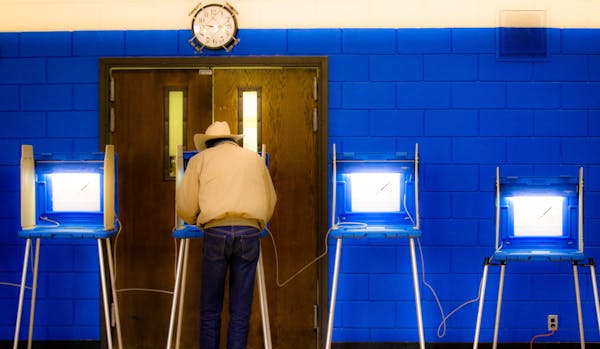In "Ranked-choice voting: By the data, still flawed" (Feb. 13), Profs. Lawrence Jacobs and Joanne Miller rightly call for a "sober" analysis of election data to measure the success of ranked-choice voting. They claim that a careful review of 2013 Minneapolis election data demonstrates that RCV is "flawed." Unfortunately, Jacobs and Miller, possibly blinded by their own opposition to RCV, misread the data, ignore the context within which the 2013 elections were contested and ultimately fail to provide a sober analysis.
The authors begin by (reluctantly?) "saluting" a remarkable "accomplishment" of RCV: the dramatic reduction in negative campaigning. This is a historic accomplishment, indeed. But Jacobs and Miller quickly move to their critique: "fans of RCV promised more … to equalize participation." This is the crux of their article. Actually reading the promise provides a sobering rejoinder: FairVote Minnesota indeed promised a "more diverse swath participating in the political process," but it did not promise equal voting.
The authors assume that the act of voting is the same regardless of how much voice is expressed. The fact is that having the opportunity to express multiple choices is a way to enhance participation.
Yet even if we restrict our discussion to actual voting, the data do not support the conclusions Jacobs and Miller make. The professors claim that the turnout gap between the so-called "affluent" wards and the so-called "poor" wards was not mitigated by RCV. The fact is that turnout for every election is highly dependent on factors having nothing to do with the election system.
Turnout in a presidential year is dramatically higher. Does that mean that RCV would have been credited with higher turnout if it had been used during a presidential year? The answer is clearly no. Another example: Turnout in the Fifth Ward increased from 17 percent in the 2009 general election to 24 percent in the 2013 general election. Do the authors credit RCV with this 7 percent increase in turnout? No.
Yet if we compare turnout from non-RCV elections to RCV elections across most wards, turnout increased. By the authors' own logic, we should credit RCV with this increase. To be clear, I don't credit RCV alone, because turnout is driven by competitive elections, not by the type of ballot used. But just as we can't credit RCV alone for turnout increases, so we can't criticize RCV for turnout gaps.
The data are even more stark when comparing turnout for a primary election (the voters' first chance to express their choice) — which Minneapolis eliminated as a result of RCV. Primary election turnout in the Fifth Ward in 2005 was a paltry 8 percent. That means there was a 300 percent increase in turnout when comparing primary turnout in 2005 to general election turnout in 2013. Do the professors credit RCV with a 300 percent turnout increase in the Fifth Ward? No, they don't. Yet that is what the data show.
The authors further blame RCV for spoiled ballots. They argue that the "complicated ballot" and "strict guidelines" made it more difficult for some voters to cast a legal ballot. Beyond the patronizing assumption that some voters are more able to read complex ballots than others, the authors' claim is contradicted by more relevant data. In the 2008 primary, the city of Minneapolis reported that 13.4 percent of ballots were spoiled in the Fifth Ward. I suspect the professors would not credit RCV with a reduction in spoiled ballots — yet by eliminating the primary, that's exactly what RCV accomplished.
Moreover, RCV was not the cause of the complex 2013 ballot. Under the city charter, mayoral candidates simply need to pay $20 to get on the ballot. Raising the cost and/or establishing a signatures requirement would reduce the number of candidates and simplify the ballot.
The most damning failure to use data soberly is in the authors' conflation of "white" and "affluent" on the one hand, and "communities of color" and "poor" on the other. While there are certainly ward-wide patterns in Minneapolis, there is also substantial diversity in each ward. What makes Jacobs and Miller convinced that the "poor" and the "people of color" in the Second, Third, Fourth, Fifth and Ninth Wards are the voters whose ballots were spoiled? The authors' crude measure that assumes homogeneity in each ward is not "by the data"; it is an effort to misuse data for the authors' preferences.
Finally, let's look at the results — the most important measure of any election. Under RCV, voters elected the first Latina, the first Somali-American and the first Hmong-American to the Minneapolis City Council.
Proof that RCV promotes broader participation may simply require taking a trip to City Hall.
Matthew F. Filner is a political-science professor and chair of the Social Science Department at Metropolitan State University. His views do not necessarily represent those of his employer.

The little park that could … be better
Climate change looms large this election year
For this Minnesota legislator, action targeting child abuse is intensely personal


